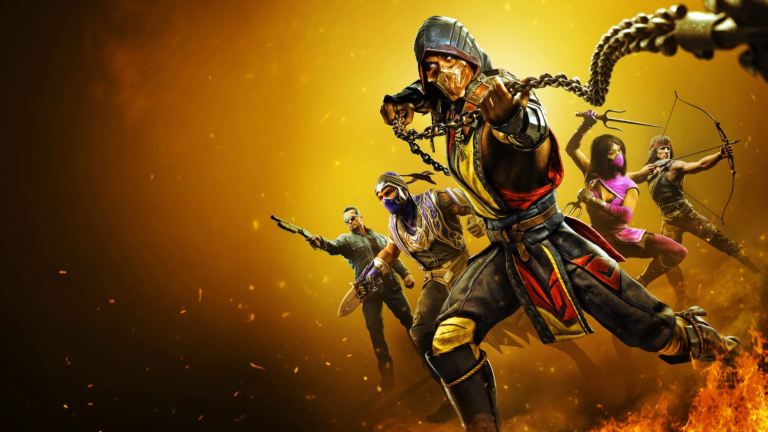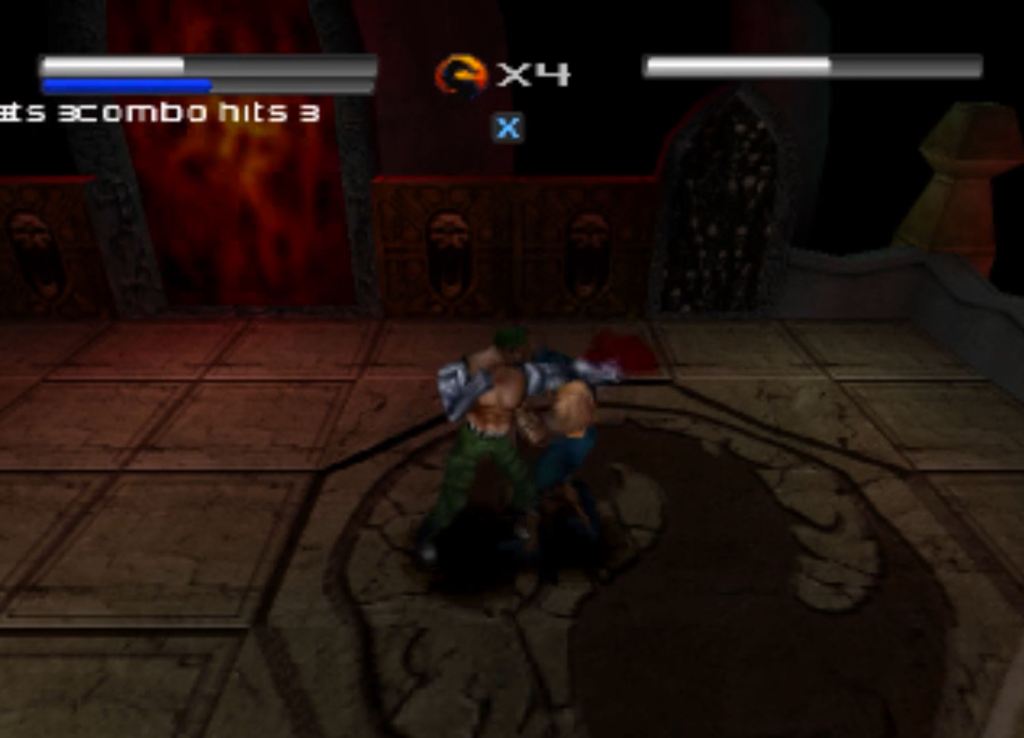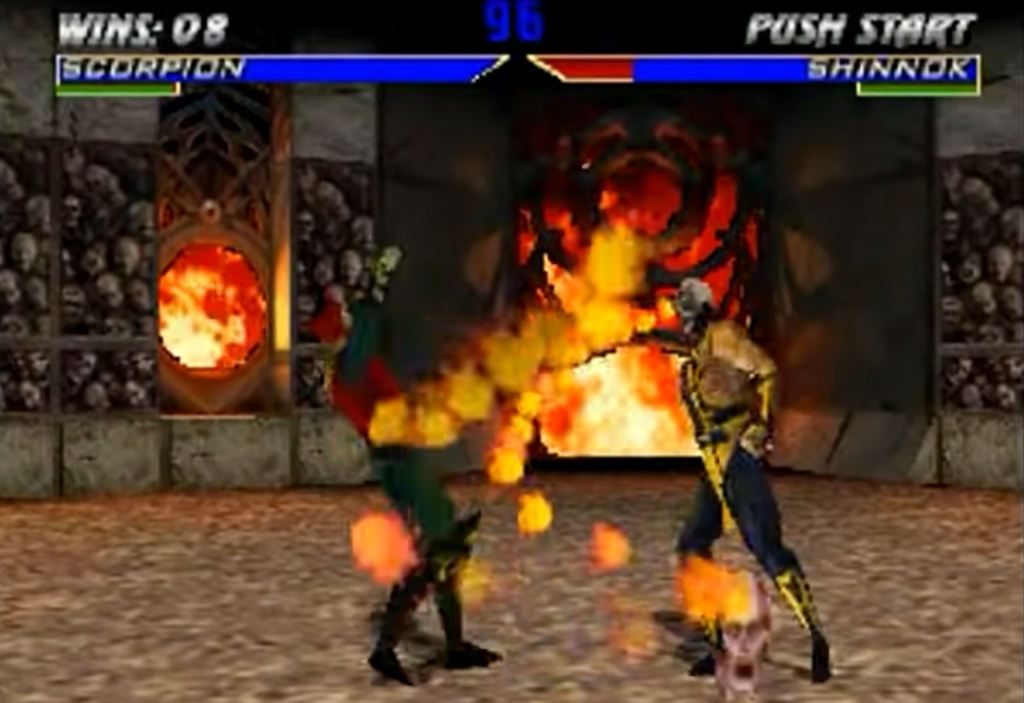Every Mortal Kombat Game Ranked Worst to Best
As Mortal Kombat turns 30, it's time to look back at the best Mortal Kombat games and the one that left us feeling like we were on the receiving end of a fatality.

Mortal Kombat turns 30 this year. During that time we’ve been treated to three live-action Mortal Kombat movies, a live-action TV show, a Saturday morning cartoon, a novel, several comic books, a live tour, four animated movies, and a hilarious handful of imitators. Oh, and there have also been a bunch of Mortal Kombat video games. When you consolidate all the series’ ports and upgrades, you end up with fourteen unique entries. Eleven of them are straight-up fighting games and three of them are spinoffs of varying quality.
So, as Baraka pulls out the Friendship birthday present to help celebrate the occasion, let’s take a look at the Mortal Kombat video game series from worst to best. As mentioned, all of these are being lumped together with their upgraded versions. There’s no real reason to separate Mortal Kombat 3 from Ultimate Mortal Kombat 3, for instance.
I’m also only counting standalone Mortal Kombat games and not games with Mortal Kombat guest appearances. That means no Injustice or NBA Jam. Sorry basketball fans.

14. Mortal Kombat: Special Forces
The nicest thing I can say about Mortal Kombat: Special Forces is that it is not actually the worst Mortal Kombat game ever. That honor belongs to Mortal Kombat Advance, which is a port of Ultimate Mortal Kombat 3 and therefore gets lumped into that entry. Special Forces is still plenty bad, though.
This is one of those games that was rushed out the door in an unfinished state. Originally, it was supposed to be an action game where you play as both Jax and Sonya (it was even depicted as such on a magazine cover) but the whole thing was thrown together so fast that Sonya ended up being cut without so much of an explanation. Even Kabal, a major member of the villains’ team, got cut.
What we got instead was a sloppy and borderline unplayable collection of mazes and endless bland action. It was barely coherent, but hey, at least it gave us Tremor.

13. Mortal Kombat 4
The late-’90s obsession over converting nearly every popular gaming franchise to 3D is tough to look back at. For every Mario game that got it right, it feels like there’s an Earthworm Jim and a Castlevania that got it laughably wrong. For instance, Midway decided to follow their excellent 2D Mortal Kombat 3 games with the scaled-down, and downright ugly, 3D fighter, Mortal Kombat 4. With it came a cast of new characters who were either incredibly boring or laughably derivative.
The new things this game’s 3D engine allowed for just couldn’t make up for the title’s other flaws. The developers even had to implement a combo-stopping system to make up for their inability to program around infinite combos. This game’s melee weapons were at least a good start toward a great idea, but they can only do so much. MK 4 even dropped the classic text endings in favor of questionable cutscenes. The results are…amazing.
12. Mortal Kombat vs. DC Universe
Honestly, I was never too bothered by the controversial bloodless Fatalities and “Heroic Brutalities” in this game. I was more bothered by the hypocrisy behind those ideas considering DC Comics spent years filling their comics with brutal gore. For some reason, though, they felt that brutal gore in a Mortal Kombat game was a step too far.
This one suffers from being the weak link between Mortal Kombat: Armageddon and Mortal Kombat 9 while having little to stand out beyond the novelty of the crossover and the story campaign. The timing-based EX moves, the “falling off a cliff brawling” minigame, and the “RAGE” meter just did not add much to the MK experience. It also doesn’t help that the DC side of the roster was about as basic as a DC roster can get.
Still, that crossover aspect ultimately “saves” Mortal Kombat vs. DC Universe. Those two worlds just work shockingly well together. The game’s endings are also pretty inspired. Where else can you see Dark Knight Sub-Zero or Shao Kahn leading an army of Kryptonian Phantom Zone criminals? This game also started the trend of big Midway/NetherRealm cinematic story modes, but this one goes the extra mile by splitting that mode between the points of view of each half of the crossover. I still think we should have gotten Johnny Cage vs. Booster Gold out of this, though.
11. Mortal Kombat Mythologies: Sub-Zero
This Sub-Zero spinoff gets a lot of hate and regularly shows up on a lot of “worst game ever” lists. I feel like its overwhelmingly negative reputation is undeserved, though. Is it a great game? Not at all. Once you get used to the confusing controls, though, you may find that it’s an inoffensive game that just did not live up to the hype.
Through a mix of digitized sprites and questionable CGI, we get to see the penultimate adventure of Bi-Han: the first Sub-Zero. In what is both a prequel to the first game and a lead-in to Mortal Kombat 4, we also witness the origins of Scorpion and Noob Saibot, as well as an introduction to new villains Quan Chi and Shinnok. It’s even better on the PlayStation due to the live-action cutscenes of very questionable quality (as well as the unlockable blooper reel)
Sure, this game’s maze stuff is annoying, and some of the platforming sections are cheap and frustrating, but the game is still worth playing so long as you find the patience for its worst aspects.
10. Mortal Kombat: Armageddon
MK: Armageddon is a lesson in the dangers of quantity over quality. The finale of Mortal Kombat‘s PS2 era offered an absolutely massive roster that included pretty much everyone who was playable in a Mortal Kombat game up to that point (as well as a new protagonist and antagonist).
Unfortunately, the game’s massive roster ended up being Armageddon‘s undoing. Individual Fatalities were replaced with a universal Fatality combo system that quickly got old. While every character got an ending (which is impressive given that there were 62 characters in the game), those endings were also missing images and generally suffered from weak presentation quality. While MK‘s multi-fighting style gimmick was never the series’ strongest idea, cutting everyone down to one fighting style and one weapon style still felt like a downgrade.
Even though Taven’s Konquest mode was fun for what it was, this game’s other gimmicks couldn’t prop this title up. Those included a half-baked “Kreate-a-Fighter” mode and a forgettable Mario Kart knockoff called “Motor Kombat.”
9. Mortal Kombat: Deadly Alliance
Several years after Midway burned its goodwill with the unholy trifecta of Mythologies, Mortal Kombat 4, and Special Forces, they regrouped and came back with Mortal Kombat: Deadly Alliance. It was the dawn of a new MK era. Midway even straight-up killed off Liu Kang, Shao Kahn, and Goro to kick the whole thing off!
The beginning of the PlayStation 2 era gave us a new aesthetic where everyone looked like an action figure and everyone exploded into bloody popcorn. The new fighting style system had some issues, but it was a nice change of pace from the earlier games where almost everyone had the same basic moveset. The tutorial-based Konquest mode also wasn’t that great, but unlocking all the art, extra costumes, and other fun shit found in the Krypt was a total blast.
Deadly Alliance wasn’t perfect, and it was unfortunate that everyone only had one Fatality to their name, but it brought the franchise back to form. It felt like Midway wanted everyone to know that Mortal Kombat was back, was fresh, and was only building to something much bigger (and better) down the line.
8. Mortal Kombat
Even though it was created to piggyback off Street Fighter II’s success, the first Mortal Kombat had a style all of its own that eventually led to countless copycats of laughable quality.
So many people tried to steal MK‘s thunder, but nobody came close. This game’s visuals, excellent sound design, and deep lore (complete with comic book prequel) just hit. There was something special about seeing a character like Goro be built up through the game’s supplementary materials only to find yourself finally facing off against the monster.
Granted, MK was not exactly the deepest fighting game out there (even by the standards of its time). Yet, this title somehow made even its deficiencies work. There were only seven playable characters, two bosses, and a hidden opponent, and they are all iconic. Hell, three of those characters were just different colored versions of the same basic sprites, yet even those fighters felt distinct. Later MK games picked up the ball and ran with it, but the original was such a strong start.
7. Mortal Kombat 3
Midway’s success was starting to go to their head at this point in the evolution of the MK franchise. Mortal Kombat 3 was certainly bigger than what came before, but that new scale came at a price. The grindhouse feel of the previous games was replaced with a 1990s comic book identity.
That tonal transition also affected the absolute glut of Fatalities (including the newly introduced Animalities), which had far less grit and generally felt far more cartoony. Gone were the grisly images of Sub-Zero holding up a spine or Kung Lao’s victim splitting in half like a banana peel. Now everyone was either blowing up into a pile of ribcages or their sprite was being cut apart in a lazy way that made it look like their hands were floating in mid-air.
The game also introduced the “Run” button, which opened up those “dial-a-combos” that made the action feel faster and more hectic. It definitely felt more “in-your-face” than previous entries and came with the last great new cast of characters the franchise would enjoy for years. This one was certainly different, but that doesn’t mean it was all bad.
6. Mortal Kombat: Deception
The Deadly Alliance engine was a mixed blessing. It was a fresh start that helped wipe away the stench of Mortal Kombat 4, but despite its ambition, that engine game with a lot of technical baggage. That said, Mortal Kombat: Deception was easily the best lemonade that could be made from Deadly Alliance’s lemons
Everything in this game was bigger in the best ways possible. The game’s roster is bigger and brings back some beloved older characters. The gameplay, highlighted by the additions of combo breakers and “ring out” death traps, just felt better. Everyone has two Fatalities (and a special self-Fatality), Konquest mode is insanely impressive, Chess Kombat is pretty fun, and Puzzle Kombat really needs to be rereleased as its own thing one of these days. I’d buy it on Switch.
Honestly, Deception‘s biggest flaw (outside of lingering technical issues) was the “quality” of its new characters. Havik was great, but it’s hard to love a game that stuck us with the likes of Dairou and Darrius. Shujinko (the guy we’re forced to play as in Konquest) is also easily the worst protagonist in Mortal Kombat history. In Raiden’s ending, an angry Raiden seven smites Shujinko for being a gullible dumbass. It’s deeply satisfying.
5. Mortal Kombat: Shaolin Monks
It took three tries, but those strange attempts at an action-oriented Mortal Kombat spinoff finally paid off.
Shaolin Monks‘ basic concepts are just brilliant. Liu Kang and Kung Lao star in this beat-em-up retelling of the end of the original Mortal Kombat‘s story and the entirety of Mortal Kombat II‘s story. Instead of taking part in a tournament where virtually everyone has to survive for the sake of the next game’s roster, though, our heroes just go around various locations from the original two games and fight off the series villains. This time around, though, those villains aren’t protected by plot armor.
Yes, nearly every MK boss character is killed off here, and each meets their demise at the hands of a specific (and often cinematically gruesome) Fatality. The whole thing is a total blast, and it’s a damn crime that the proposed Sub-Zero/Scorpion follow-up never got off the ground.
4. Mortal Kombat 9
I remember how it was such a big deal when Mortal Kombat 9’s Top 8 took the stage at Evo 2012. Mortal Kombat, despite its great success, has always been the black sheep of the competitive fighting game scene. Mortal Kombat 9 was NetherRealm’s attempt to make a fighting game that could be played at a high level. However, the title’s most lasting impact was the scope of its cinematic story.
As a time-travel reboot, MK 9 came off as an ambitious love letter to the original trilogy. While this game’s story mode started as a detailed retelling, it soon exploded into something else entirely. Classic characters and stages were reborn in new ways, giving us human versions of the Lin Kuei cyborgs and even a cyborg version of Sub-Zero. We also got the first set of DLC characters in the series’ history: the missing original trilogy character Rain, the popular post-trilogy character Kenshi, the former urban legend Skarlet, and guest fighter, Freddy Krueger.
With the badass ending clips and the entertaining Challenge Tower, Mortal Kombat 9 was the revival the series desperately needed. Not only was it a good springboard for the series going forward, but it also helped pave the way for MK‘s amazing sister series, Injustice: Gods Among Us.
3. Mortal Kombat II
The second Mortal Kombat game took everything that worked from the first and made it all that much better. The roster of seven grew into a collection of twelve. The hidden fighters went from one to three. Everyone was given at least two Fatalities, as well as Friendships and Babalities. Goro’s replacement Kintaro looked far more visually impressive, and Shao Kahn was one of the first fighting game final bosses to truly look like a force to be reckoned with.
Most importantly, this is where the franchise started to get weird in the best ways possible. The first Mortal Kombat always felt like it was on the outside looking in. It took place on Earth, but despite the inclusion of elemental ninjas, fire-spewing undead, and cybernetic eyes, the truly weird shit was coming from Goro and Shang Tsung. Mortal Kombat II allowed us to dive deeper into that world. This sequel featured blade-armed monsters, lizard people, magic clones with demonic teeth, trees with faces, and so on. The series was getting crazier, but it was handling that transition in the right way.
The gameplay may not be too deep by today’s standards, but it was still solid. Back when this came out, it showed you just how big an arcade fighting game could truly get.
2. Mortal Kombat 11
Mortal Kombat 11 didn’t always hit its mark. The Krypt system feels overly complicated and emphasized gameplay grinding to the point that NetherRealm had to issue an apology and update. Even then, the game’s loot box-lite system left a bad taste in a lot of fans’ mouths.
Crucially, though, MK 11 features probably the best gameplay in the history of the franchise. There’s more weight to the characters than ever before, and using separate meters for both offensive and defensive upgrades is simply brilliant. The cast is also so damn good, especially the choices of truly inspired guest characters. Not only do we get Spawn, RoboCop, and John Rambo having short conversations before their battles, but they’re all voiced by their original actors. Who doesn’t love getting to hear Keith David’s gruff whisper (even if we also had to deal with Ronda Rousey’s Sonya Blade portrayal in the process)?
In many ways, MK 11 represents all of the progress this series made over the years. There’s just one game in the franchise it can’t quite top…
1. Mortal Kombat X
Jumping forward a generation is always tricky in fighting games. Tekken 3 made it work, but Soul Calibur 5 nearly killed that series. Street Fighter III also caused massive problems for Capcom and…well, SNK was doomed no matter how good Garou: Mark of the Wolves did. Still, after Mortal Kombat 9 played up the nostalgia factor (and killed so many major characters), Mortal Kombat X was pretty much forced to do something different. Thankfully, that new effort absolutely paid off.
Mortal Kombat X features what is easily the series’ best new cast of characters since Mortal Kombat II. Not only do you have a new generation of heroes led by the new protagonist Cassie Cage, but there’s the relatively benevolent ruler of Outworld, Kotal Kahn, and his colorful collection of henchmen.
The engine is also a major step up from Mortal Kombat 9. Actually, this is the point in the franchise where the Fatalities are starting to get rather disturbing due to how realistic they look. Then you have the reintroduction of Brutalities, which can be nasty in their own way (especially the one where Leatherface excessively beats you to death with a hammer)
Most importantly, Mortal Kombat X features Predator as DLC, and included with that DLC are special skins for certain legacy characters. Most notably, we get Commando Johnny Cage and a version of Jax that looks just like (and is actually voiced by) Carl Weathers. If you pit Carl Weathers Jax against Commando Johnny Cage, Johnny will say, “You son of a bitch!” as they do the handshake. It’s the most beautiful thing I’ve ever seen, and one of those little touches that show what makes this game as special as it was.
